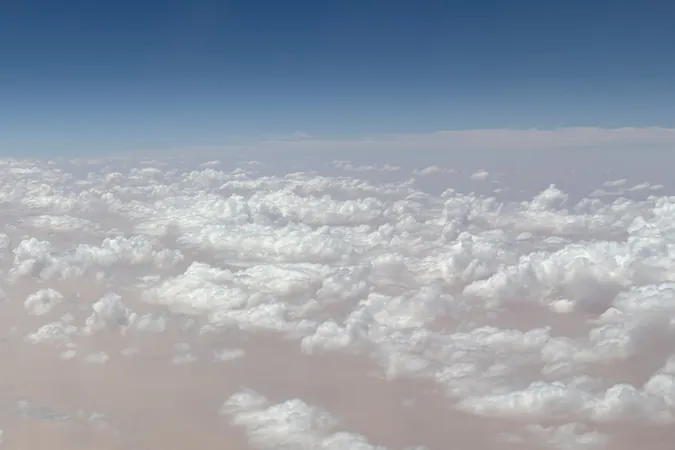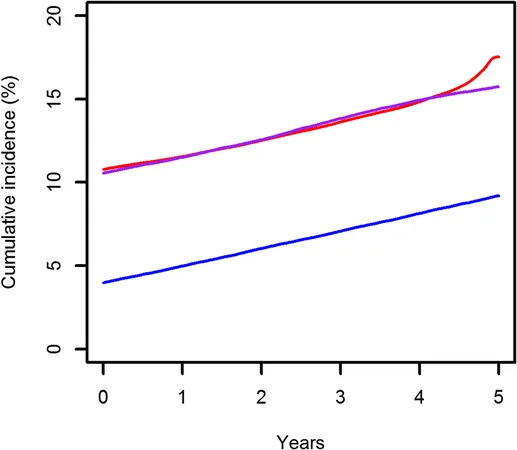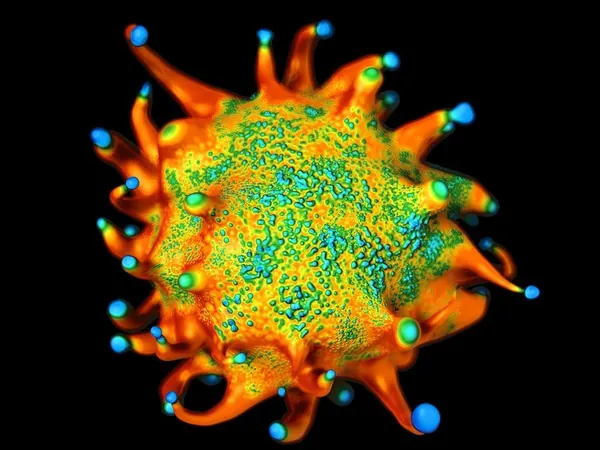
How Desert Dust Shapes Ice Formation in Our Clouds: A Groundbreaking Discovery!
2025-07-31
Author: Mei
Revealing the Hidden Influence of Desert Dust
A striking new study has uncovered that natural dust clouds sweeping in from remote deserts have a crucial role in triggering cloud freezing in the Northern Hemisphere. This fascinating process plays a pivotal role in determining how much sunlight clouds reflect and affects their rain and snow production—key factors in climate forecasting.
Dusty Secrets from the Sky
Published in the prestigious journal Science, this research draws on an impressive 35 years of satellite data. Led by a talented team from ETH Zurich, the study reveals that mineral dust—tiny particles whipped up by the winds and thrust into the upper atmosphere—significantly aids in freezing cloud droplets, especially in northern climates where temperatures often hover just below freezing.
Diego Villanueva, a postdoctoral researcher in Atmospheric Physics and the study's lead author, states, "Wherever dust levels are higher, clouds are notably more likely to freeze at their tops. This phenomenon directly influences both the amount of sunlight reflected back into space and the volume of precipitation produced."
The Science of Ice-Creating Clouds
Focusing on mixed-phase clouds, which contain both supercooled water and ice and typically form between -39 °C and 0 °C, the researchers discovered these clouds are especially sensitive to environmental changes—particularly the introduction of ice-nucleating particles from desert dust aerosols.
Their analysis showed a striking correlation: as dust levels increased and cloud temperatures decreased, the formation of ice-topped clouds surged. Impressively, this pattern mirrored laboratory predictions about dust’s role in initiating droplet freezing.
Ulrike Lohmann, senior co-author and Professor of Atmospheric Physics at ETH Zurich, remarked, "This groundbreaking study is among the first to demonstrate that satellite observations of cloud composition align with laboratory findings."
A Milestone for Climate Models
The manner in which clouds freeze is crucial for understanding how much sunlight they reflect and how much water they contribute as precipitation. Historically, climate models have struggled to accurately integrate these dynamics due to a lack of concrete reference points.
This new research establishes a critical link between airborne dust and the frequency of ice formation atop clouds, creating a valuable benchmark for enhancing climate projections.
Unraveling Climate Complexity
For years, scientists have delved into droplet freezing on a microscale. This study represents a significant leap forward, illustrating that cloud ice formation behaves similarly to droplet freezing, but on a much larger and observable scale.
The implications are vast, extending atmospheric research from nanoscale dust structures to the kilometer-scale cloud systems that satellite technology can analyze.
Global Differences in Dust's Impact
However, the relationship between dust and ice isn’t uniform across the globe. For instance, in the Sahara Desert, where cloud formation is infrequent and the air is dominantly hot, the freezing process is often inhibited.
Additionally, in the Southern Hemisphere, marine aerosols may replace dust in influencing cloud behavior. The research team emphasizes that more studies are essential to grasp how factors like updraft strength or atmospheric humidity influence cloud freezing.
Dusty Grains and Our Changing Climate
Ultimately, this study reveals an intriguing truth: tiny dust particles from faraway deserts have a significant impact on the clouds looming above us—and by extension, they play a vital role in shaping the future of our climate.




 Brasil (PT)
Brasil (PT)
 Canada (EN)
Canada (EN)
 Chile (ES)
Chile (ES)
 Česko (CS)
Česko (CS)
 대한민국 (KO)
대한민국 (KO)
 España (ES)
España (ES)
 France (FR)
France (FR)
 Hong Kong (EN)
Hong Kong (EN)
 Italia (IT)
Italia (IT)
 日本 (JA)
日本 (JA)
 Magyarország (HU)
Magyarország (HU)
 Norge (NO)
Norge (NO)
 Polska (PL)
Polska (PL)
 Schweiz (DE)
Schweiz (DE)
 Singapore (EN)
Singapore (EN)
 Sverige (SV)
Sverige (SV)
 Suomi (FI)
Suomi (FI)
 Türkiye (TR)
Türkiye (TR)
 الإمارات العربية المتحدة (AR)
الإمارات العربية المتحدة (AR)